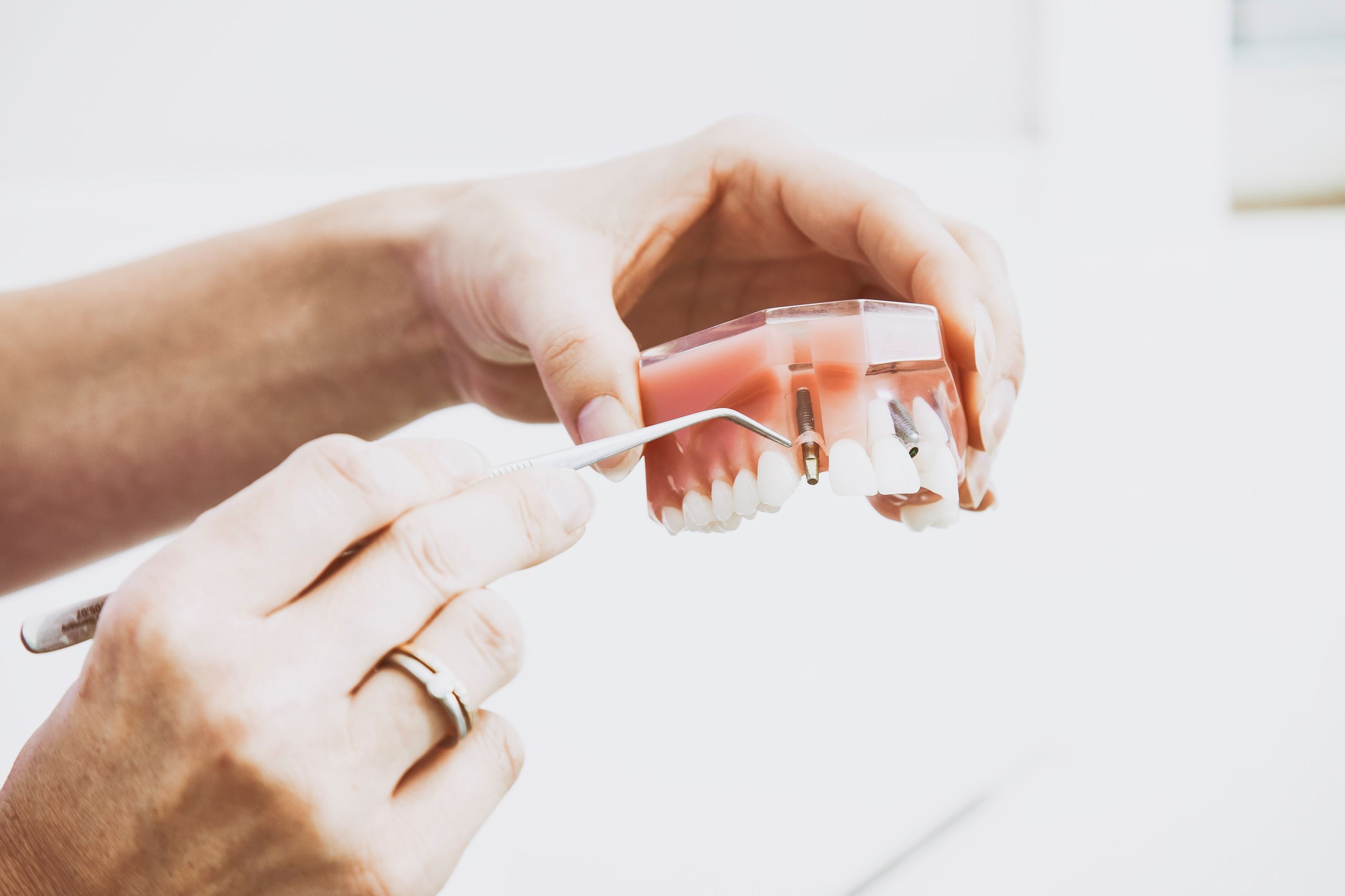 If you have a missing tooth - or are soon to have one thanks to a planned extraction - it's important to consider getting a replacement, whether that is an implant, denture or bridge.
If you have a missing tooth - or are soon to have one thanks to a planned extraction - it's important to consider getting a replacement, whether that is an implant, denture or bridge.
When a tooth is missing, it's not uncommon for the teeth either side of the gap to concave inwards or over erupt, which can result in an incorrect bite. Plus, there's the benefit of having an extra tooth to use for chewing, as well as an aesthetic factor if your smile is noticeably missing a tooth.
Whatever the case, a dental implant can be a great way to go about replacing a tooth. It creates a new artificial root in your jaw bone, which attaches to a prosthetic tooth that we make specifically for you and your dentition. This creates a permanent prosthetic tooth that acts just like a natural tooth in terms of function and aesthetics.
What happens when you get a dental implant?
The first step for any implant is for your dentist or oral surgeon to ensure you're a good candidate for the procedure. If your jaw bone or general oral health isn’t strong enough to support the implant, you may need a bone graft to strengthen the area. Your dental professional may suggest an alternative option such as a bridge, as well.
Assuming everything is in order for the implant, the work can begin. To start, we’ll place an artificial root into your jaw – this root is usually made of titanium. In some cases, we may also attach a post (called an “abutment”) to the root as well. Once this is finished, it generally takes a few months for the gum to heal around the root before we take the next step.
Once the gum is healed, it’s time to attach your new tooth! If we added an abutment during the first procedure, the tooth can be attached immediately. If not, we’ll first add the abutment before fitting the tooth. Note that it can take more than one appointment to get the fit just right, as the tooth will need to look natural, feel natural and sit well with the rest of your teeth and jaw. We want to get it just right so that your new tooth feels just like your natural tooth.
You can get several implants, but if there are three or more teeth missing, we may suggest implants and bridges to fill the gap. In this case, implants will be inserted on either side, then a bridge will be placed between them. A bridge is a false tooth that is held in place by the teeth on either side of it, which can sometimes help you avoid the hassle of having to get another implant.
Proper implant care
Initially, you’re likely to need extra check-up appointments during the first year to ensure the implant is responding well and isn't coming loose or causing any issues with your bite. It is very important you keep on track with your 6 monthly preventive care appointments as this helps us monitor your overall oral health, while also keeping an eye on your implant.
In a clinical study that spanned eight years, implants had a 97% success rate1. The best ways to improve your implant’s success rate are to practice good oral hygiene and schedule routine check-ups as recommended by your dentist.
At home, care for your implant in much the same way you would for any natural tooth. That is, twice daily brushing and flossing, as well as a diet that minimises sugary snacks and drinks. If you need any additional tips, your dentist will be sure to let you know after the procedure.
If this sounds like something that could interest you or you think you could be a good candidate, have a chat to your dentist and what your next steps may be.
1 Busenlechner et al (2014). Long-term implant success at the Academy for Oral Implantology: 8-year follow-up and risk factor analysis. J Periodontal Implant Sci 44(3): 102-108. http://dx.doi.org/10.5051/jpis.2014.44.3.102